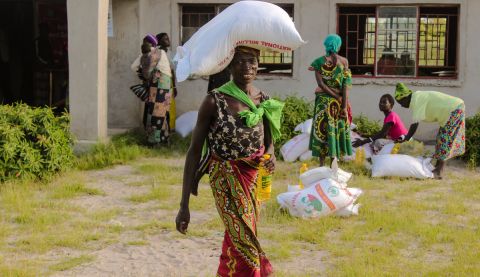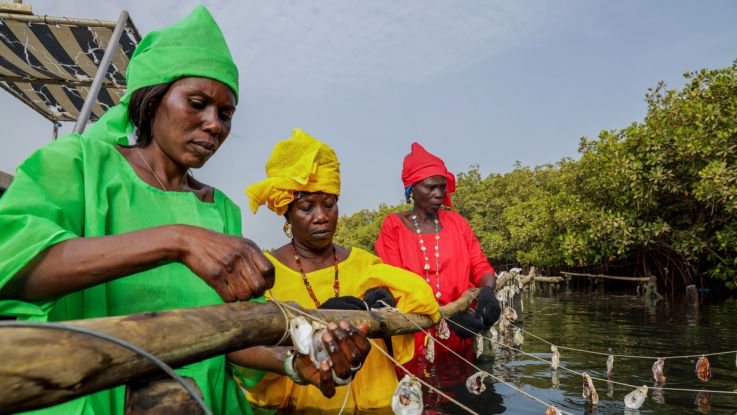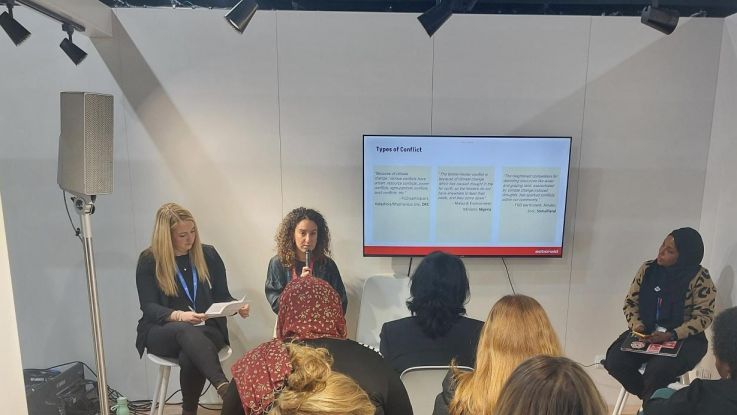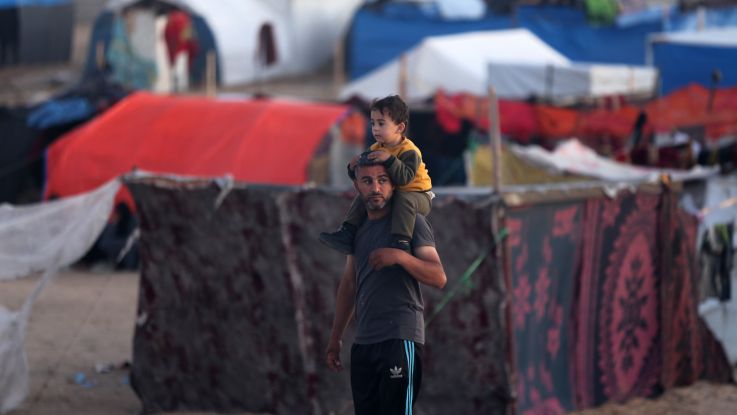Southern Africa food crisis: the response in Zambia
28 February 2020
ActionAid’s Gemma Bruley-Prince, returning from Zambia, describes the urgency of the Southern Africa food crisis, the response and the need for action now.

In Zambia's Western Province, ActionAid is supporting the distribution of maize, beans and cooking oil. Photo: Fredrick Ntoka/ActionAid
Southern Africa is currently in the grip of a food crisis that’s affecting millions of people across Malawi, Mozambique, Zambia and Zimbabwe. Gemma Bruley-Prince, of ActionAid's humanitarian team, recently returned from Zambia’s capital, Lusaka, where she was supporting the ActionAid team on the response plan to this crisis.
She explains what's happening in Zambia, what's caused the food crisis and what ActionAid are doing to help.
Q: What’s the situation like for people in Zambia?
A: Zambia has some of the highest rates of malnutrition in Africa: about 40% of children aged under five are stunted (impaired growth caused by malnutrition), while nearly 15% are underweight.
Poverty levels are as high as 70% in rural regions, and as this crisis develops, people’s situations are tipping over into desperation.
Many vulnerable families are relying on the common zita root for food; others are being forced to turn to wild foods like the mawawa fruit, or even potentially poisonous mushrooms.
In major cities like Lusaka, life goes on: pockets of poverty sit alongside tourist destinations, centres of commerce and government.
But in the north of the country, where floods have concentrated, and in the west and south, where severe drought has struck, families are increasingly living in a state of severe hunger.
And where the food crisis is most severe, we're hearing anecdotally of women at risk of violence due to the long distances they walk to find food and water, and girls dropping out of school due to hunger (they're often too tired to make the journey, and meals that were once available at school have now dried up).
Q: What has caused the food crisis?
A: The main trigger of the crisis is drought, which has affected approximately 52 districts in Zambia (just under half of all districts). Combined with floods and pest infestations, drought has caused a huge decline in maize production, triggering record highs in food prices (nearly double what they fetched a year ago).
Among the countries most affected by the food crisis, figures show Zambia is the second-most in need, and has very little funding available for its emergency response.
The IPC (an international classification of food security) rates levels of need:
- Three represents ‘crisis’
- Four represents ‘emergency’
- Five represents ‘famine’.
In Zambia, the number of people rated at IPC levels three and four is 2,250,000. That's more than two million Zambians at crisis or emergency levels of need.
Q: What has been the response?
A: Governmental and UN agencies, and NGOs like ActionAid, are reacting to the crisis and building a response, but public awareness is still extremely low.
Slow onset disasters like this are always last to get media attention, and unfortunately Southern Africa’s hunger has been building alongside world events like the Australian bushfires and Coronavirus, which all compete for our attention.
Meanwhile, the world's escalating climate crisis makes emergencies like Southern Africa's drought ever more frequent, and more difficult to deal with.
The traditional rhythms of agriculture were once clear to rural farmers: they knew the right times to plant and when to harvest, they knew when to expect the rains, and they were able to plan around and mitigate against the inevitable ‘lean season’.
Now, faced with increasingly erratic rainfalls, Zambian farmers are operating in a brutal, unforgiving climate with little respite.
Q: What can the rest of the world do?
A: ActionAid is currently scaling up our response to the crisis, and our humanitarian staff are prioritising food distribution (including maize, beans and cooking oil) and the protection of women and girls.
In the long-term, we’re training communities in more sustainable, climate-resilient farming methods (agroecology), and providing tools.
And as in every emergency, ActionAid is working to prevent violence against women and girls, and ensuring girls aren’t forced to miss out on their education because of hunger. We work to promote women's leadership so that their voices and needs are heard at all levels of the response.
How you can help
Your donation could help us reach people in Zambia with life-saving emergency food, and deliver long-term support that helps to prevent future food crises.
A donation of just £30 could provide food for a family of five for two weeks. Please donate now.



